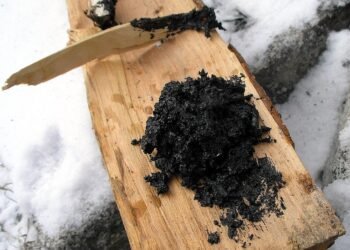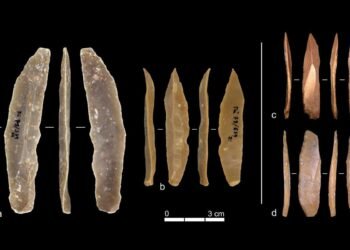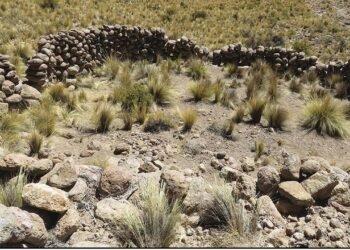In an archaeological excavation in Turkey’s Kütahya province, researchers have uncovered extraordinarily well-preserved brain and skin remnants belonging to two individuals from the Bronze Age.
This remarkable discovery took place at Tavşanlı Mound, often referred to as the “Heart of Western Anatolia” due to its unique heart-shaped appearance when viewed from above. The excavation, a collaborative effort between the Ministry of Culture and Tourism and Bilecik Şeyh Edebali University, is shedding new light on the lives of individuals who lived approximately 3,700 years ago.
This is the first time that skin remnants have been discovered during archaeological excavations in Turkey, while brain remnants are also exceptionally scarce, having been found only four or five times previously.
The brain and skin remnants are believed to belong to two individuals: a young man aged 15-18 and a middle-aged man aged 40-45. Both sets of remains were preserved through carbonization, a process where extreme heat or compression transforms a substance into carbon or charcoal during fossilization.
Researchers speculate that the individuals met their demise as their homes were engulfed in flames during an attack around 1700 BCE. It is believed that they were unable to escape, leading to their tragic fate. The intense heat from the fires played a crucial role in preserving the brain tissue within their skulls, as well as skin remnants discovered between the chest and abdomen of one of the skeletons.
Professor Erkan Fidan, who leads the excavation, explained that Tavşanlı Mound is the oldest settlement in the region, likely serving as the capital during the Bronze Age. The excavation revealed evidence of a large-scale attack on the city around 1700 BCE., resulting in the complete destruction of the settlement. It remained uninhabited for approximately 300 years following the attack.
While the discovery has provided valuable insights into the fate of these individuals, the reasons behind the attack and the identity of the attackers remain unknown. Researchers are now delving into the historical context to understand the circumstances that led to this significant event.
The findings were presented at the European Association of Archaeologists conference held in Belfast, Northern Ireland, from August 30 to September 2, 2023.
Tavşanlı Mound holds a unique position as an archaeological site. Located at the crossroads of Western Anatolia and Central Anatolia, it offers invaluable insights into interregional communication during ancient times.
The ongoing excavations, led by Professor Fidan and his team from Bilecik Şeyh Edebali University, are part of a long-term endeavor expected to span 30 years. These excavations aim to uncover the history of Tavşanlı Mound, with a particular focus on identifying ancient city walls dating back to the Hittite era. If successful, this research could unveil more than 8,000 years of history and rare written documents from the region.























